
Catch This!
Summer lasts just ninety-one days. In Aspen, of course, those days (and even more so, the nights) are packed with arts options: concerts, theater performances, festivals. Combine the briefness of the season with the bounty of events, and there’s potential for missing out on the truly good stuff.
That’s where we come in. We’ve scoured every arts and cultural institution’s lineup to answer these questions: Which events rise to the top? And why—what should audiences know that will maximize their cultural experience?
We would tell you to choose wisely, but we’ve already done that for you. So just enjoy.
SHORT PICKS
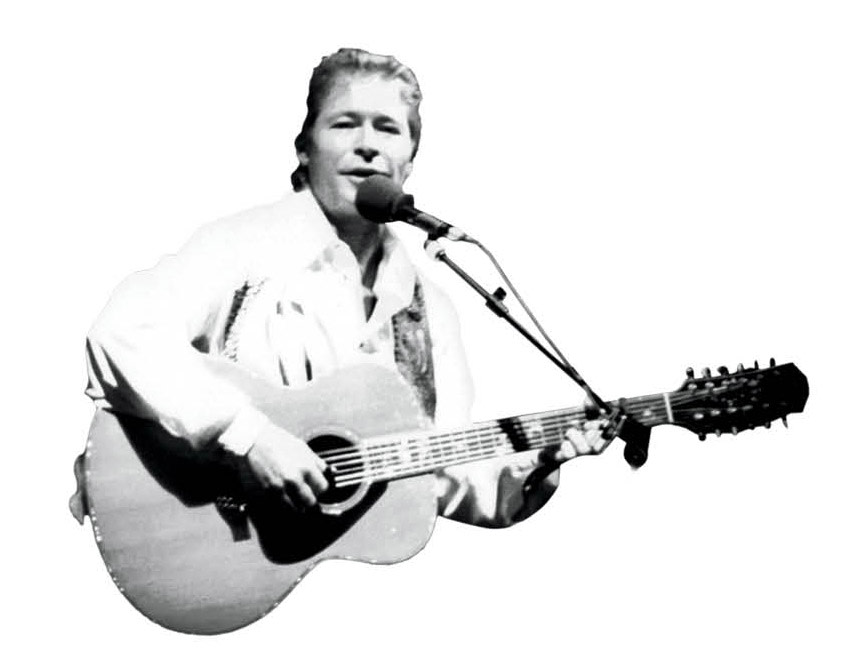
Image: Ross Kribbs
The Music Is You: A Tribute to John Denver
Currently in Release
The Aspen icon might have seemed irretrievably stuck in the 1970s, but Denver’s concern for the environment and engagement with global issues now look prescient. And with this tribute album, released in April, his songs have never sounded hipper. Certifiably cool acts—My Morning Jacket, Edward Sharpe & the Magnetic Zeros, Lucinda Williams, Josh Ritter—line up to cover “Leaving on a Jet Plane,” “Rocky Mountain High,” and “Sunshine on My Shoulders.” Coming in June: a less hip, but even more far-out take on Denver’s songs. Great Voices Sing John Denver, produced by Denver’s frequent collaborator Milt Okun, features opera singers including Placido Domingo giving a very unexpected twist on the catalogue.
African Guitar
Belly Up, May 29, JAS Café Downstairs @ the Nell, Aug. 8
Goumar Almoctar, who performs as Bombino, hasn’t been easy to discover. A member of the nomadic Tuareg tribe, Bombino has lived in exile in several north African countries; his instrument—the guitar—was banned in his native Niger; and, until recently, his recorded output was mostly limited to cassette tapes. But Bombino (who will perform at Belly Up) is now flashing bright on the radar of savvy American audiences: his album Nomad, released in April, was produced by Dan Auerbach of the Black Keys. Vieux Farka Touré, from Mali, is better known. The son of the celebrated Ali Farka Touré, his 2001 album The Secret featured Dave Matthews and Derek Trucks. He’ll be a highlight of this summer’s JAS Café series.
Lawrence of Arabia
Wheeler Opera House, June 3–6
The Wheeler Opera House, which switches to digital projection this fall, says goodbye to film with the ultimate big-screen classic. No matter how enormous home theaters become, they will never be grand enough to contain the sweeping sight of Peter O’Toole, as the British officer T.E. Lawrence, crossing the Arabian Desert. This farewell to film comes, no doubt, with a big, sloppy, emotional kiss: Jon Busch, who has programmed the Wheeler Film Series for forty years, is a devotee of the art of projection and a sentimentalist. His usual pre-screening comments are sure to be as emotional as they are insightful.
Pink Floyd, Revisited
Snowmass Mammoth Fest, June 7,
Belly Up, July 31–Aug. 1
“Time is gone/The song is over,” Pink Floyd sang in “Time,” from their landmark 1973 album, Dark Side of the Moon. Wrong, wrong: these songs will last an eternity. Dark Side of the Moon remained on the charts a phenomenal fifteen years, and interest remains strong. Local fans get two chances to reconsider tunes including “Us and Them” and “Money”: Return to Dark Side of the Moon, a funk supergroup featuring members of P-Funk and Living Colour, headlines the new Snowmass Mammoth Fest. Tribute band Brit Floyd’s new show, P-U-L-S-E 2013—which covers five entire albums—settles into Belly Up for a two-night stand.

Image: Ross Kribbs
“The Science of Food”
Aspen Center for Physics, June 6
Even the brainiest of astrophysicists have to eat. So David Weitz, who earned a degree from Harvard in superconductivity and specializes in soft matter, focuses on the place where physics and foodies converge. His Aspen Center for Physics lecture, “The Science of Food” (at Paepcke Auditorium), looks at the scientific underpinnings of cutting-edge cooking techniques like molecular gastronomy. The talk should whet foodies’ appetites for the Food & Wine Classic, which starts nine days later.
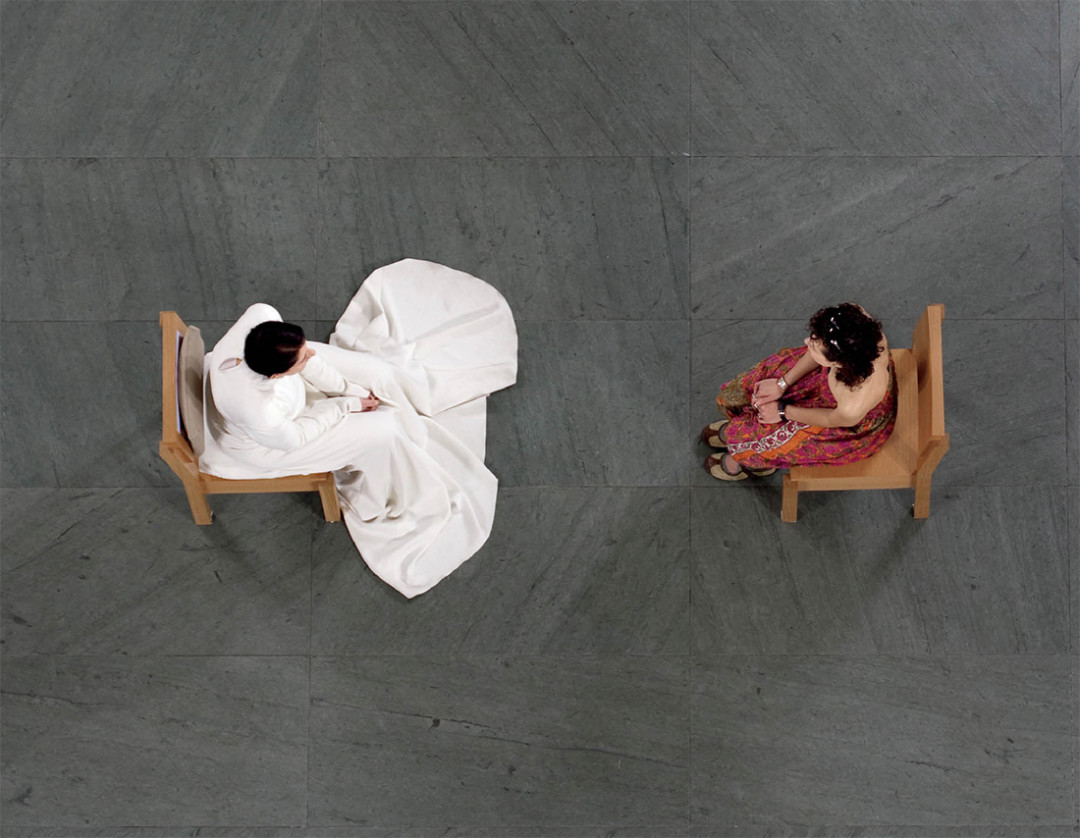
Marina Abramovic: The Artist Is Present
Marina Abramovic
Anderson Ranch Featured Artists Lecture Series
Anderson Ranch Arts Center, July 25, 12:30 p.m.
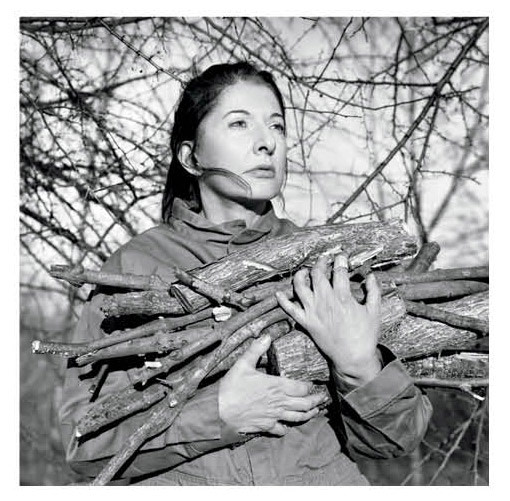
Portrait with Firewood
Image: Courtesy: Marina Abramovic
An artist in early-1970s Yugoslavia who, by financial necessity, lived in her van, Marina Abramović could hardly have been more of an art-world outsider. But her work put her further on the fringe: a performance artist, Abramović focused on using her body in sacrificial ways. Rhythm 5, from 1974, had her throwing herself into a burning wooden star, ultimately losing consciousness from the lack of oxygen.
But after four decades—“forty years of people thinking you’re insane and you should be put in a mental hospital,” she says in the documentary Marina Abramović: The Artist is Present—Abramović has arrived as a seminal figure. Her “grandmother of performance art” status was confirmed not only by the retrospective mounted in 2010 at New York’s Museum of Modern Art, but by the response. A record 850,000 people visited the exhibition, with several thousand lining up to participate in a new piece: sitting silently and intimately across from Abramović.
With no bodily violence, no political theatrics, the project stripped performance art to its essence, connecting human to human. As Abramović puts it: “There are no objects to hide behind, no story to tell. There is nothing—just you.” The MOMA show extended her celebrity. The performance was covered extensively, and was the center of the documentary.
When Abramović appears here, she hopes her creative essentials will be challenged, hopes someone asks the question she grew tired of in her youth but now finds herself missing: “Why is this art?” At sixty-six, Abramović complains: she’s not alternative anymore.
SHORT PICKS
Best New Chefs
Food & Wine Classic, June 15
The food is scrumptious, the wine magnificent. But probably the most meaningful component of the Food & Wine Classic is the introduction of the Best New Chefs, the visionaries leading the country into the future of dining. This year’s Classic celebrates the twenty-fifth anniversary of the program with a party at the Sundeck atop Aspen Mountain, a conversation between Food & Wine editor Dana Cowin and past honorees Thomas Keller and Eric Ripert, and the unveiling of another ten young food stars—from the owner of a New York taquería to the chef of a sustainable-seafood restaurant.
James and Deborah Fallows
Aspen Summer Words, June 16–21
If it’s true that all Americans—OK, everyone on planet Earth—should be immersing themselves in the culture of China, husband-and-wife journalists James and Deborah Fallows are the place to start. James’s 2012 book, China Airborne, uses the airline industry to illuminate not only China’s economic aspirations but also its environmental problems and political stubbornness, both of which are suffocating. Deborah’s Dreaming in Chinese is an ideal companion, looking at the Chinese character through the quirks of language.
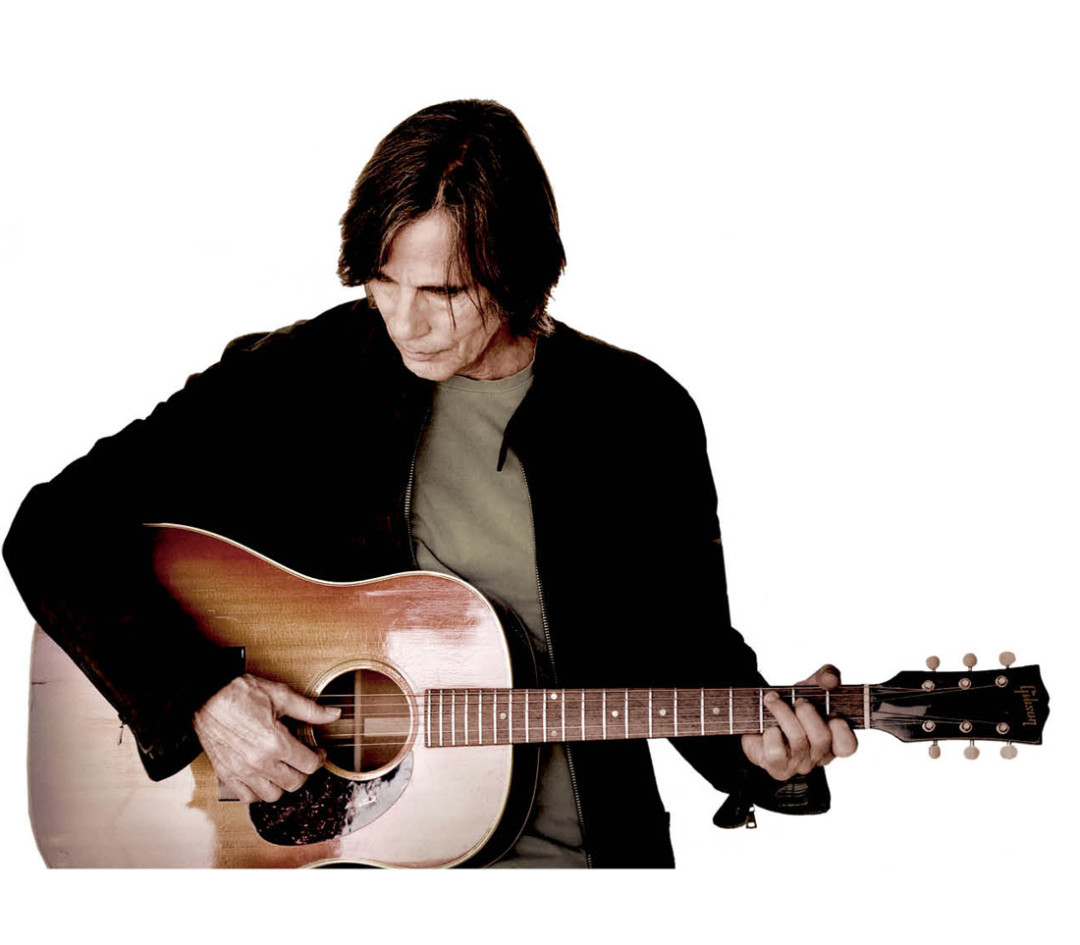
Image: Courtesy: Jackson Browne
Jackson Browne
Jazz Aspen Snowmass, June 21
How’s this for feeling wanted: every year for more than a decade—“literally every year,” Jazz Aspen Snowmass president Jim Horowitz says—JAS has tried to book Jackson Browne. Persistence finally pays off, as the quintessential Southern California singer-songwriter makes his local debut. Browne will pull out the hits (“Running on Empty,” “Doctor My Eyes”), but also offer a twist on his sound. Fiddler Sara Watkins, from Nickel Creek, opens the show and is featured in Browne’s acoustic band.
Burns & Allen
Thunder River Theatre, opens June 21
It was in the infancy of Carbondale’s Thunder River Theatre that Lon Winston, the company’s founder, and Valerie Haugen began thinking about creative couples: Sartre and Beauvoir, Jasper Johns and Robert Rauschenberg. Nearly two decades later, the idea is manifested onstage. Burns & Allen, a warm look at the comedy team of George Burns and Gracie Allen, is the first in Thunder River’s Passionate Collaborators series.
(WITHIN) Labyrinth Within
Aspen Fringe Festival, June 22–23
Think foreign-language films demand a lot of the viewer? The Aspen Fringe Festival’s (WITHIN) Labyrinth Within raises the translation factor further. Swedish filmmaker Pontus Lidberg’s film uses not dialogue but choreography—a series of Lidberg’s own pas de deux—and a score by Pulitzer Prize–winner David Lang to spin an existential thriller about jealousy and illusion. The presentation also includes live dance by New York’s Morphoses Dance Company to complement the action on-screen.
“Cities”
Aspen Ideas Festival, June 26–July 2
Places like Beijing, New York, Tokyo, and São Paulo became massively important in the twentieth century, and that trajectory of significance isn’t about to end. Goldman Sachs chairman Lloyd Blankfein, New Orleans mayor Mitch Landrieu, and media figure Arianna Huffington gather for an Ideas Fest conversation about how individual cities will lead the way into the world’s economic future. In a separate event, Henry Paulson, former US Treasury Secretary, tells how China’s unprecedented move toward sustainable urbanization could be the biggest economic event of the twenty-first century.
Yo-Yo Ma
Aspen Ideas Festival, June 26–29
Not only a supreme cellist and the best-known classical musician of his time, Yo-Yo Ma speaks often about the significance of the arts and the value of cross-cultural projects. Named artist-in-residence for the Aspen Institute’s 2013 Ideas Festival, Ma—born in France to Chinese parents and raised in New York City—will be the face of the festival’s Citizen Artists track. Ma will lead a Conductors’ Symposium, with renowned music directors discussing the role of the “citizen musician.”
Icarus at the Edge of Time
Aspen Music Festival, June 27
The Aspen Music Festival opens its season on a daring note. Philip Glass’s Icarus at the Edge of Time is not just new music—it premiered in New York in 2010—but also heady stuff, a multimedia work with film and narration elements, based on the outer-space novella by physicist Brian Greene. Glass’s original score addresses themes of travel and the cosmos, experimentation and truth.
Benjamin Britten
Aspen Music Festival, multiple performances
The British composer was a champion of minority rights, which makes him fit well with the Aspen Music Festival season theme of “Conscience and Beauty.” Britten also has ties to Aspen: in 1964, he was awarded the Aspen Institute’s Aspen Gold Medal and delivered a landmark speech on the importance of the arts. Add in that Britten was born 100 years ago and that classical music organizations love to commemorate such occasions, and you get a deep, broad examination of his work, with twenty-five pieces on the program. Among the highlights in the summerlong retrospective: a semistaged version of the opera Peter Grimes (July 27), conducted by music director Robert Spano, and The Young Person’s Guide to the Orchestra (July 16).

Image: Ross Kribbs
Norbert De La Cruz III
Aspen Santa Fe Ballet Aspen District Theatre, July 18 & 20
Square None was the humblest of statements by an artist who values humility. The first professional piece by choreographer Norbert De La Cruz III, created for Aspen Santa Fe Ballet, Square None conveyed the idea of a very beginning—the step before square one.
“It’s where you start off, with nothing. Nothing but yourself,” says De La Cruz. “You know where you’re starting from, but the journey is unknown.”
De La Cruz isn’t far from that beginning: Square None premiered just last year. But the piece, distinguished by dramatic lighting and a dynamic language of coordinated movement, was a hit from Aspen to Manhattan, and a career was launched. De La Cruz earned several honors, the most prestigious of which, the Princess Grace Award, was given for his achievement with Square None. The award comes with a meaningful prize: the opportunity to create a second piece for the ASFB, to debut this summer (July 18 and 20).
The new piece, still untitled, allows De La Cruz to take another step from the place he considers his starting point.
“At Juilliard I was an embryo, still in the womb,” he says. “Aspen Santa Fe Ballet and its directors are my parents, showing what my potential could be. Ten years from now, I’ll think of it as how I got unveiled.”
Aspen audiences get a close look at how that potential develops. Where Square None specifically addressed issues of the young, timid artist, De La Cruz, a soft-spoken twenty-five-year-old, is moving into the next phase.
“There are other parts of me I want to show,” he says. “I want to make a contrast, where the audience doesn’t know the arc, where it’s something that even I don’t know. I don’t want to be a stagnant choreographer. People go to the theater to be changed.”
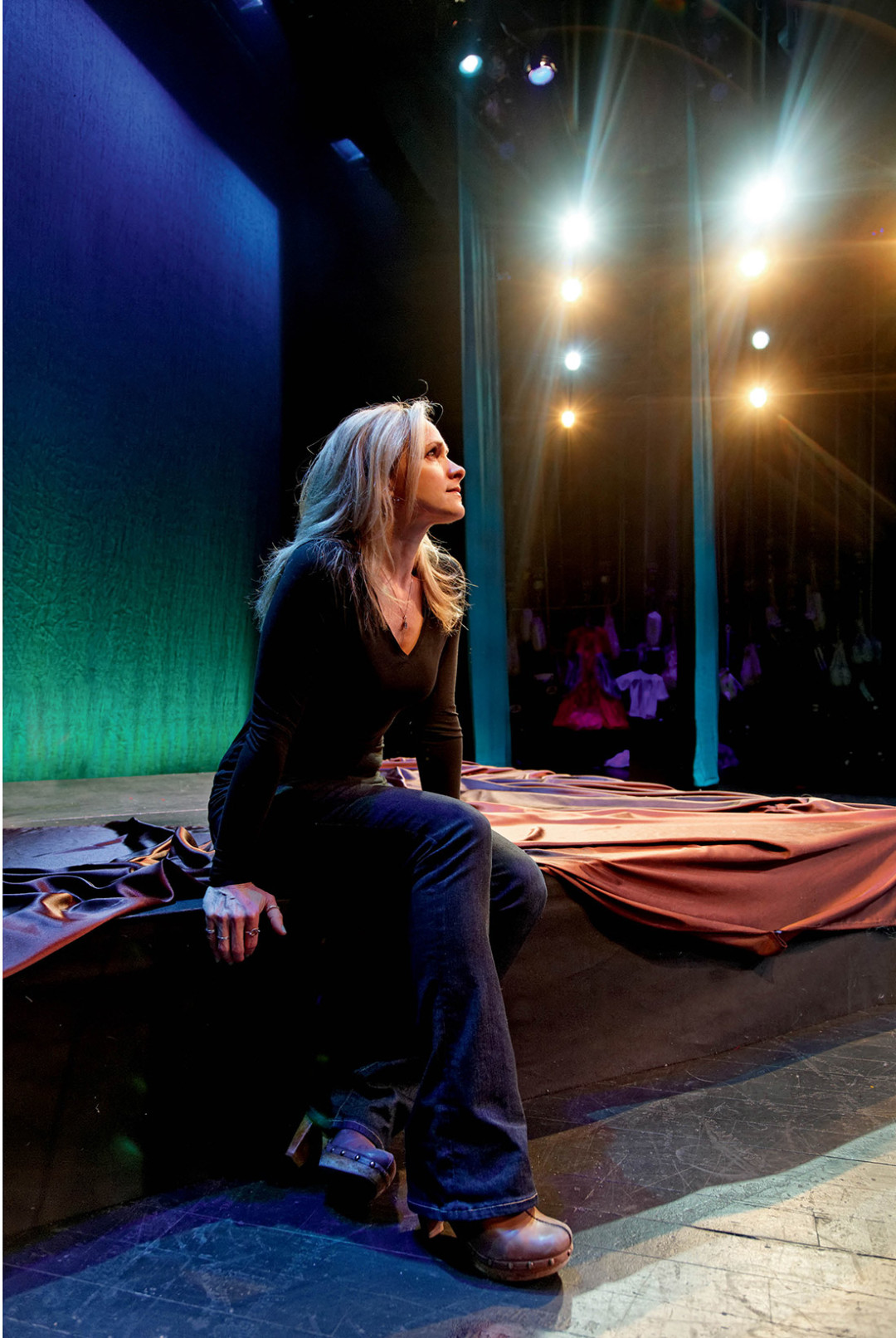
Image: Ross Kribbs
Paige Price
Theatre Aspen Summer Season
Over her five years as artistic director of Theatre Aspen, Paige Price has focused on offstage matters: shaping the organization’s identity and, most dramatically, building the handsome venue in Rio Grande Park, a task completed last year.
Time now to focus on artistic projects. This summer, Price directs You’re a Good Man, Charlie Brown, her first directing effort in Aspen apart from 2010’s Defying Gravity, a musical revue with an all-local cast. She will also oversee the grandest production in Theatre Aspen’s thirty-year history—the musical Les Misérables, featuring nineteen actors and utilizing every inch of the intimate 189-seat space.
“We’ve spent our time solidifying the venue and supporter base, establishing our personality,” says Price, who first appeared in Aspen as an actor. “Now we can be more ambitious with our artistic projects.”
You’re a Good Man, Charlie Brown might count as sweet-hearted family fare. But the musical, which premiered in 1967, captures all the wry observations of Charles Schulz’s Peanuts comic strip, and Price counts it as theater with substance: “It sounds like a kids’ show. But, man, there are deep messages in there.”
There will be no overlooking the ambition behind Les Miz. Merely figuring out where to stash the cast members when they are offstage is an undertaking. “There’s a lot of moving parts,” Price says, adding that it’s far more complex than 2011’s Annie, which, with fifteen actors, had been the organization’s biggest show. “Massively bigger,” she emphasizes.
The summer projects will stretch Price creatively. She expects Theatre Aspen will expand in turn: “If the leaders of an organization don’t grow, the organization will suffer.”
VENUES
BENEDICT MUSIC TENT
Born: 2000
Designer: Harry Teague Architects
Distinguishing characteristics: 2,050-capacity venue still manages to feel tent-like; free seating on lawn outside; occasional interruptions from rain, airplanes, thunder, birds, children on lawn
Predecessors: Bayer-Benedict Music Tent (b. 1965); Eero Saarinen tent (an actual tent, b. 1949)
Signature performance: Annual season-ending concert featuring orchestra, multiple choirs, 300-plus musicians, and a mammoth composition (e.g., in 2012, Mahler’s “Symphony of a Thousand”)
ASPEN DISTRICT THEATRE
Born: Late 1990s
Distinguishing characteristic: Steeply banked seating permits seeing dancer’s feet; located in Aspen Elementary School
Signature performances: Norah Jones (2002, a few months after the release of her debut album, Come Away With Me); nearly every local appearance by the Aspen Santa Fe Ballet
SHORT PICKS
Fully Committed
Theatre Aspen, July 5–Aug. 15
The comedy in Fully Committed is spread among thirty-six characters. The entirety of those roles falls on a single actor, Matt Bailey, in this manic one-man show. Theatre Aspen’s artistic director Paige Price expects the play, which takes place in the basement of an upscale restaurant where a reservations clerk is bombarded by requests, to have a particular resonance locally. “Aspen’s got plenty of service staff who will relate,” she notes. “And plenty of demanding diners.” The role(s) also represent an abrupt shift for Bailey, who is coming off the jukebox musical Jersey Boys.
Bucksbaum Campus Opening
Aspen Music Festival and School, July 8
The Aspen Music Festival and School (along with the Aspen Country Day School) spent $60 million renovating its rustic Castle Creek campus. The community is invited to see where the future of classical music will be trained—and what the Music Festival got for its money—in an open house that includes speeches, a tour, and the obligatory but highly appropriate brass fanfare.
Simone Dinnerstein and Tift Merritt
Aspen Music Festival, July 16
Any newly formed collaboration comes with a question mark, and with this unlikely partnership, that question mark is followed by an exclamation point. Dinnerstein, a pianist, comes from the classical world, having established herself with a recording of Bach’s Goldberg Variations; the acoustic guitar–strumming Merritt resides in alt-country. But on the recent album Night, they meet in a place where the songs come from all corners—Schubert, Leonard Cohen, Merritt originals, Johnny Nash’s “I Can See Clearly Now”—and Merritt’s voice stretches into art-song territory. An ideal example of artists daring one another to step out of the safety zone.
Aspen Santa Fe Ballet
Aspen District Theatre, July 18 & 20; Aug. 24
The youthful ASFB is reaching maturity. Two key longtime dancers, Sam Chittenden and founding member Seth DelGrasso, have retired in the past year, with another, Katie Dehler, set to join them by summer’s end. Does the company retain its character as a surprising upstart? Does it become a more settled, grown-up troupe? Or does it simply get better and better, as it has over its sixteen-year history? The first program focuses on new work—including the premiere of a piece by rising star Norbert De La Cruz III; the second spotlights Dehler in three pieces from the company’s repertoire.
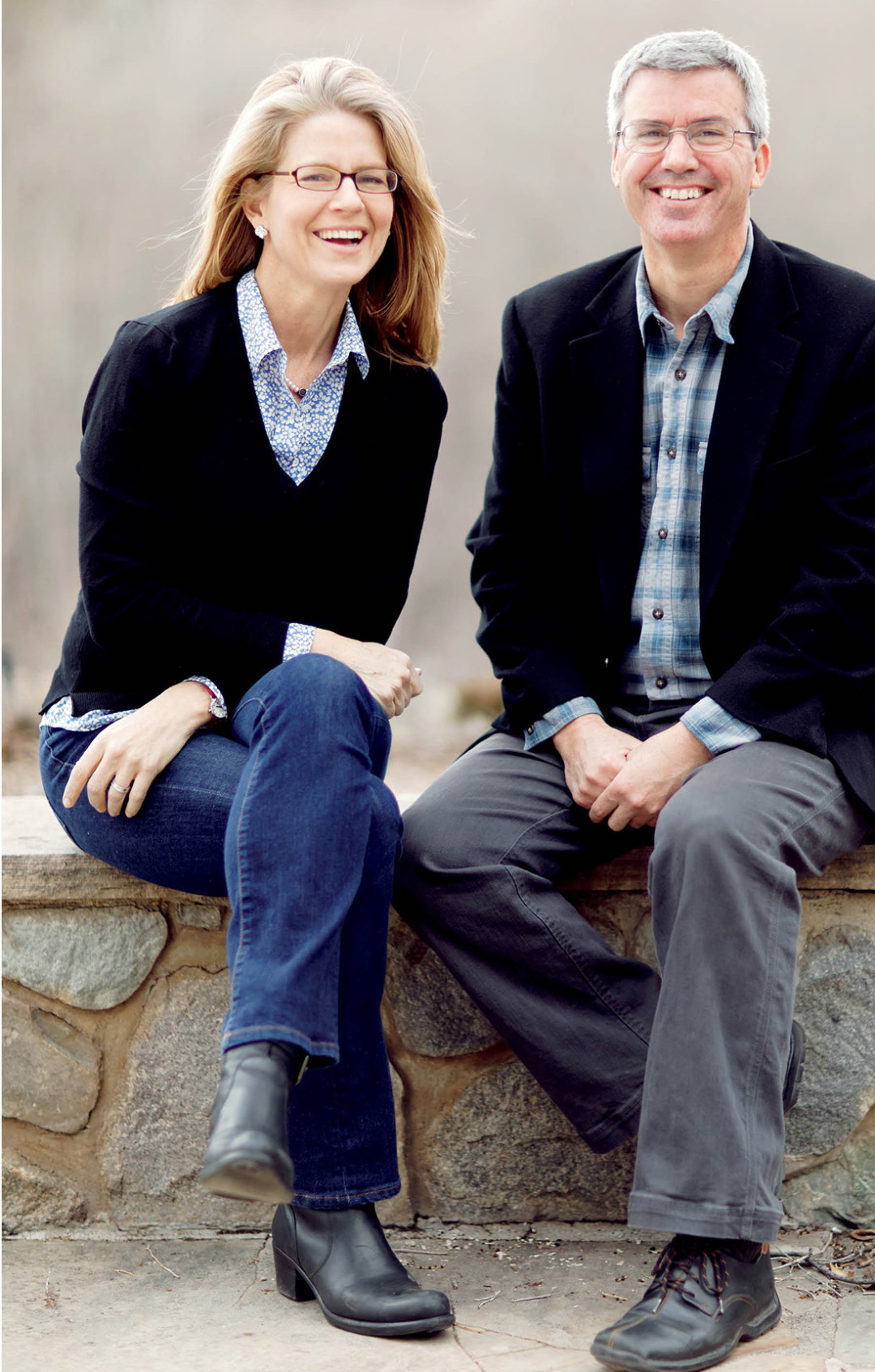
Image: Ross Kribbs
Mo LaMee and Adrienne Brodeur
Aspen Writers’ Foundation
The new leadership of the Aspen Writers’ Foundation is predictably cautious regarding novel directions. The top priority is ensuring that the flagship program, Aspen Summer Words (June 16–21), runs smoothly; they want to assess the organization’s strengths before moving forward.
But it’s likely the AWF has already made its boldest move: the hiring of that new leadership. Mo LaMee, the full-time director, and part-time creative director Adrienne Brodeur bring an impressive set of qualifications.
LaMee is the architect of what could be called “the Creede miracle”—turning the Creede Repertory Theatre, in Creede, Colo. (pop. 403), into a performance marvel that stages ten productions a season for an audience of 50,000. LaMee, who led the company for twelve years, directing, fundraising, and programming, is considered a wonder in the Colorado nonprofit sphere.
He has experience with writers, too: a third of the programming in Creede was new works. “Taking something from the page to performance—that’s an important part of the literary world,” he says.
Still, as far as connections to writers go, LaMee is more impressed with his counterpart. “I think Adrienne can bring to Aspen pretty much anyone. The people we’re contemplating—I’m stunned we’re even thinking of them,” he says.
Brodeur, a Manhattan-based editor and writer, has shown a knack for fostering relationships. In 1997, she persuaded Francis Ford Coppola to help start a story magazine. Zoetrope gave space to upstarts Ben Fountain and Jennifer Egan, who became star novelists, as well as to established writers including Gabriel García Márquez.
Specifics might be cloudy for the AWF, but the future looks bright. “We’re at that big moment—neither of us knows the details, but Aspen is uniquely positioned to have one of the country’s top literary organizations,” says Brodeur.
SHORT PICKS
Aspen Deaf Camp Picnic
Snowmass Village, July 19–20
An attempt to resurrect the old Aspen. In the 1980s, the Deaf Camp Picnic was summer’s biggest event, with thousands showing up to see the regular headliner, a local boy named John Denver, and to support the Aspen Camp of the Deaf & Hard of Hearing. After many years off, the party returns with a bunch of musical acts from Aspen’s country-rock past: Bobby Mason & Starwood and the Nitty Gritty Dirt Band, which got its start playing at the long-departed Aspen Inn. No chance that Denver’s spirit will be forgotten: each night ends with a tribute to the late singer-songwriter.
Lorna Simpson: Works on Paper
Aspen Art Museum, July 26–Sept. 22
Lorna Simpson has already proved her fearless nature: her body of visual work centers on race in America, the most treacherous of subjects. With her Aspen Art Museum show, she demonstrates a different kind of artistic daring. While she is best known for her photography and films, this is the first museum exhibition dedicated to her drawings and collages and includes a new series of works created during her residency in Aspen this past winter. Simpson’s art has never been static. When she was a child in the 1960s, race had its own set of issues and identifications. As the country has evolved, Simpson has taken account of what race means in a multicultural society.
ArtAspen
Aspen Ice Garden, Aug. 1–4
Does an art fair need to have the scale of a Basel Miami Beach or London Frieze for its host city to be considered a top-tier arts center? With enormous fairs the rage, it does seem that huge is necessary. But ArtAspen is, by design, a boutique fair. Confined to a converted ice rink, it doesn’t have the size or sizzle of the massive events. Still, ArtAspen attracts a few dozen top galleries, who represent brand-name artists (Warhol, Donald Sultan, Ansel Adams). Heading into its fourth year, ArtAspen continues to add new dealers and seems to be establishing a niche: the art fair where the art, rather than the parties and the spectacle, takes center stage. Put the fair together with the Aspen Art Museum’s splashy ArtCRUSH bash (Aug. 2), and Aspen will be near the center of the art world.
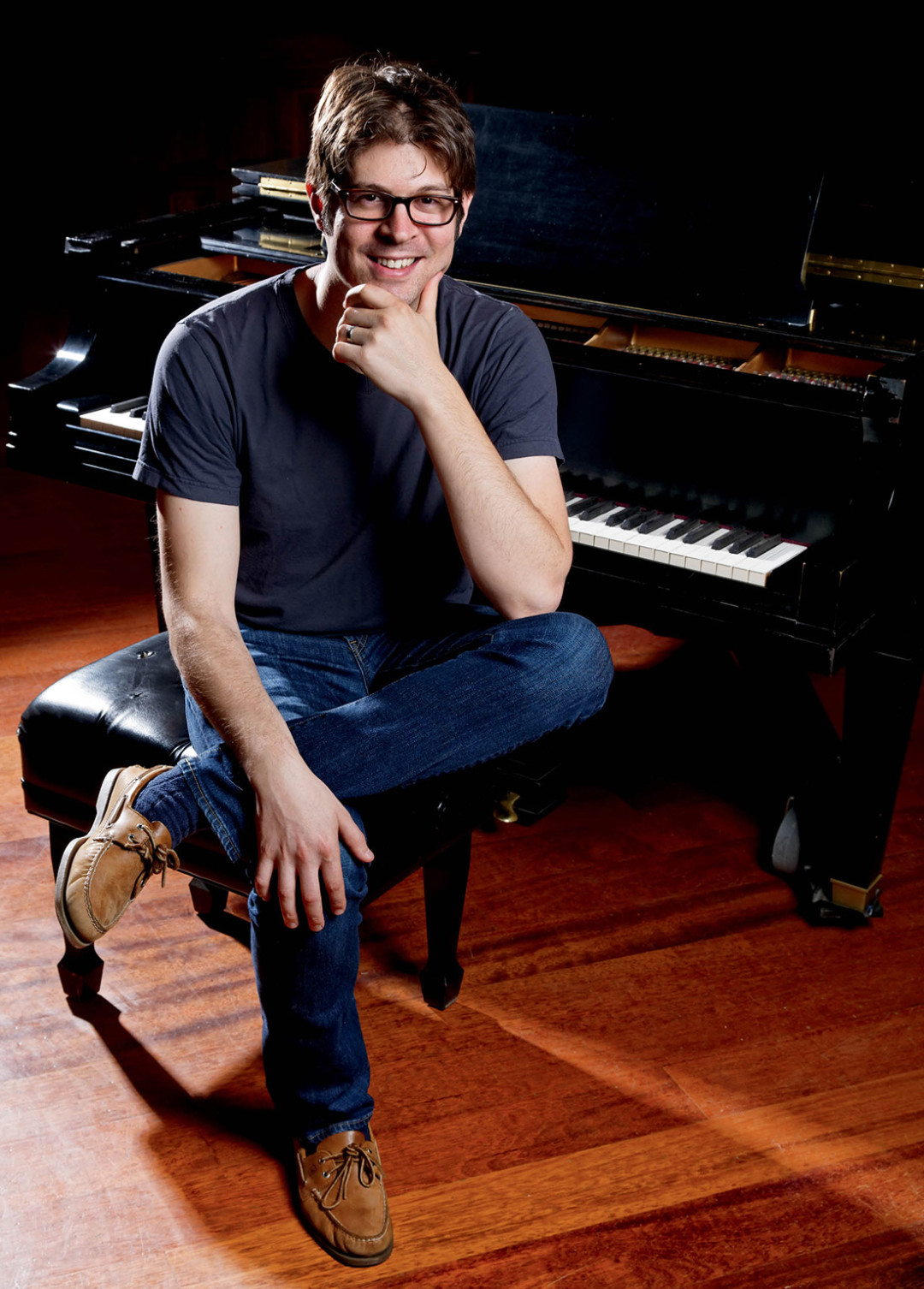
Image: Ross Kribbs
Adam Schoenberg
Aspen Music Festival, July 17
Adam Schoenberg came to Aspen in the summer of 2004, and the work he did became a foundation of his composing career. Never mind that Schoenberg spent that summer as an Aspen Music Festival stagehand, not a student.
“I was blessed just to go to concerts, learn that without stage crews, librarians, none of it happens,” says the thirty-two-year-old Schoenberg. Being on the fringe, he also realized the importance of persistent networking: “So much of being a composer is getting your music out there, being visible.”
In 2009, he put that lesson to work. Schoenberg approached conductor Robert Spano, introduced himself, and later sent Spano his piece, “Finding Rothko.” Spano responded by offering a commission.
“A conductor you just met gives you a commission?” Schoenberg says. “That doesn’t happen.”
The interaction with Spano, who has since become music director in Aspen, occurred in Miami. But the relationship has led Schoenberg back to
Aspen. “Finding Rothko” was performed here in 2011, and Schoenberg spent four winters in residence with a Music Festival educational program.
Schoenberg returns for the world premiere of “Bounce” (with Spano conducting), the first segment of an envisioned four-movement ballet. The inspiration came when Schoenberg learned his wife was pregnant—just as the commission was being finalized.
“There was no hesitation—it would be about this little one,” he says. “The first word that came to mind, for the baby and the new commission, was ‘bounce.’ It felt playful, innocent. And rhythmic.”
SHORT PICKS
“Revolutionary Summer: The Birth of American Independence”
Paepcke Auditorium, Aug. 2
There’s a reason every school kid knows the year 1776 (and why it was turned into a hit musical). It was a year of momentous events for the radical experiment known as American democracy. While the thirteen colonies assembled in sweltering Philadelphia to sign the Declaration of Independence, Britain’s military was crossing the Atlantic to quash the rebellion. Revolutionary Summer is set for publication in early June. Its author, the Pulitzer-winning Joseph Ellis, appears in the McCloskey Speaker Series to discuss how decisions made by George Washington, Thomas Jefferson, and British General William Howe altered history. Conversing with Ellis is Aspen Institute president Walter Isaacson, whose own book, Benjamin Franklin: An American Life, makes him qualified to analyze 1776.
Emerson String Quartet
Aspen Music Festival, Aug. 8
For thirty-four years, the Emerson String Quartet has performed feats of musical magic—much of it in Aspen, where they have been an ensemble-in-residence for decades—with the same four players. But last year the run of intact membership came to an end, with cellist David Finckel leaving to pursue other interests (including launching a chamber-music studio in Aspen with his wife, pianist Wu Han). The Emerson carries on, with Welshman Paul Watkins filling out the foursome. The program comprises quartets by Haydn, Britten, and, to test Watkins’s dexterity, Beethoven’s “Razumovsky” quartet, which has been known to cause musicians to throw down their instruments in frustration.
Harris Hall Twentieth Anniversary Concert
Aspen Music Festival, Aug. 13
Two decades ago, Harris Hall was a controversial subject, with critics arguing that the Aspen Music Festival had promised it would be a rehearsal, not a performance, space. The bickering has disappeared: the so-called Carnegie of the Rockies has been the site of countless memorable concerts and the recording of the Emerson String Quartet’s Grammy-winning Shostakovich quartets. The venue’s birthday bash has Joshua Weilerstein conducting violinist Robert McDuffie, guitarist Sharon Isbin, and others playing music from Vivaldi to Glass.
Romeo & Juliet
Rio Grande Plaza, Aug. 15–31
A main attraction of the Hudson Reed Ensemble’s annual Shakespeare production is the setting. With the Rio Grande Plaza as a stage, audiences experienced Twelfth Night and The Tempest against a backdrop of Red Mountain. So it’s a daring move for the local company to eliminate that backdrop. But this year, the venue turns around: the audience will have Red Mountain at its back, and the view in front will be blocked by fabric curtains. Director Kent Reed believes Romeo & Juliet calls for the turnaround. “It’s a love story. I want people to be close to the emotions,” Reed says. “An open, unbroken horizon won’t work.”
Manhunt
MountainSummit: Mountainfilm in Aspen, Aug. 22–25
As captivating as Zero Dark Thirty was, it left moviegoers wondering: what was the nonfiction version of the search for bin-Laden? Manhunt answers the question. Directed by Greg Barker, Manhunt is a documentary that digs deep, tracing the CIA’s conflict with bin Laden and Al Qaeda back years before 9/11. Even without the Hollywood touch, it makes for an intense tale. Manhunt was nominated for the Grand Jury Prize at the Sundance Film Festival.
Jazz Aspen Labor Day Festival
Snowmass Town Park, Aug. 30–Sept. 1
Many eyes popped when Jazz Aspen announced the lineup for its eighteenth Labor Day Festival. No jam bands? No ’60s-era classic rockers à la Dylan or Fogerty? Nope. This year, Labor Day makes a definite “pop” sound, with Journey, Keith Urban, Jason Mraz, and Little Big Town the top attractions. Sure, they all sell a ton of records, but can they rock in the way Labor Day audiences have come to expect? Don’t stop believing.
VENUES
Belly Up
Born: Late January, 2005 (just in time for X Games crowds)
Owner/operator/talent buyer/photographer/host/no. 1 fan: Michael Goldberg
Distinguishing characteristics: Uncommonly small venue for big-name acts; performance photographs, including in the bathrooms; Michael Goldberg
Rank on Rolling Stone’s list of best clubs in America: 16 (see page 120)
Predecessors: Double Diamond, China Club, Paradise, Ewu’s Paradise, Rick’s American Café
Signature performance: The full Wu-Tang Clan (OK, seven of eight clan members), Dec. 19, 2007














































